Theme Parks & Themed Entertainment
The Ant Bully: ” … will draw (audiences) into the story in ways they can’t even imagine.”
In the first installment of this new JHM series about Warner Bros. upcoming animated release, Roger Colton talks with executive producer Keith Alcorn about what DNA Productions did to turn John Nickle’s charming childrens book into a major motion picture
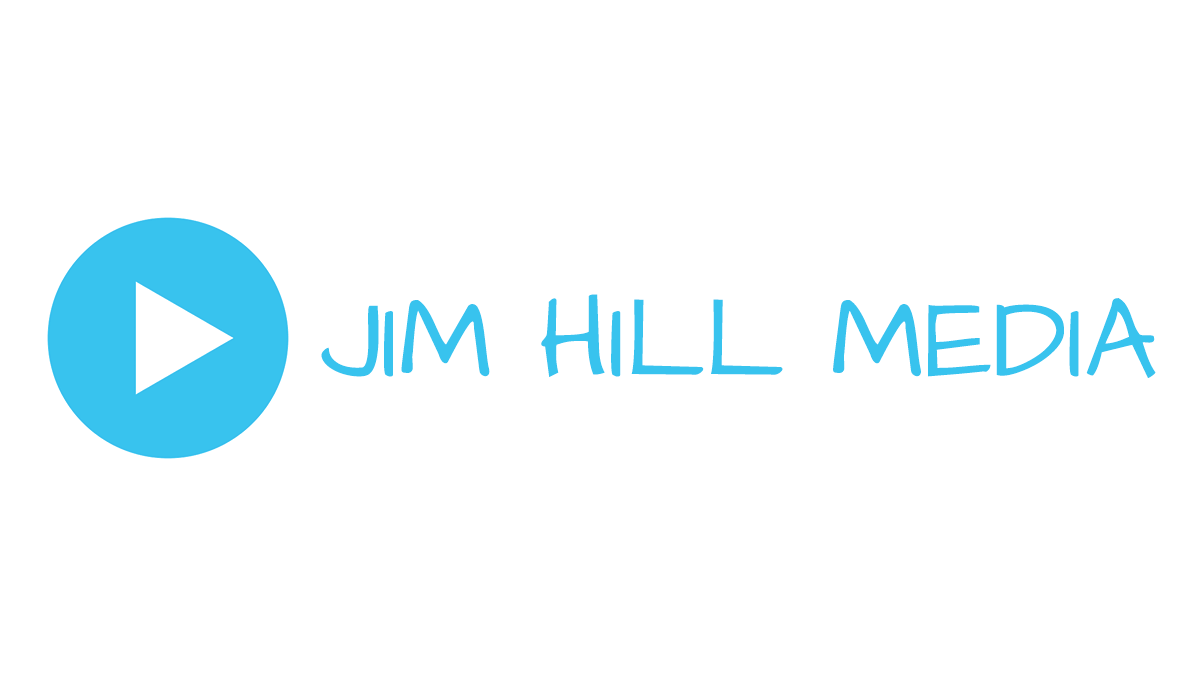
Image courtesy of Warner Bros. Pictures
Last December, I had the opportunity to visit the great state of Texas. The main reason for doing so was to visit DNA Productions, located in Irving, just outside of Dallas. At that time, the folks there were hard at work on a project for Warner Brothers and Playtone Productions.
That project? Bringing to life John Nickle’s award-winning children’s book, “The Ant Bully.” From the Amazon.com web pages for the title:
Lucas, who wears a goofy propeller cap and nerdish glasses, suffers the taunts of a tough kid named Sid. After Sid blasts him with a water hose, Lucas gets a squirt gun and does the same to a colony of ants. Alas, Lucas is no match for his would-be victims, who use a magical green potion to reduce him to their size and then sentence him to hard labor.
Once Lucas learns a lesson in community, the ants restore him to his original proportions, then devise a predictable comeuppance for his hose-toting nemesis (shrinkage, of course).
The book went on to become a favorite story, including many elementary school teachers who use it as a springboard for lessons in conflict resolution. One child of note who found the story enthralling was the son of Tom Hanks.
“My son came home from kindergarten with a book he had checked out from the library, John Nickle’s The Ant Bully,” Hanks recalled.“Reading it together, we weren’t halfway through before I thought it would make a wonderful movie. John Davis’ “Jimmy Neutron” had just come out then, and I felt the match of his talent with Nickle’s story would be perfect.”
From the film’s production notes comes more on how DNA Productions joined forces with Playtone:
“Tom sent me the The Ant Bully to see if I had a take on it,” recalls Davis, who likewise found the story full of potential for the screen.”I thought, well, if I was going to make this movie, here’s how I would approach it.”He soon met with Hanks and his producing partner Gary Goetzman, co-founders of Playtone Productions, who successfully teamed with Robert Zemeckis in 2004 on the beloved holiday film The Polar Express.
“It was obvious from our initial meeting that John’s enthusiasm, passion and vision for the material made him the perfect director for the project,” states Goetzman.”And because most children’s animated films today are branded by adult humor, it was refreshing to hear John’s take on creating an entertaining family film that would transport the audience to a unique world and take them on a fantastic adventure.”
Together the three brainstormed ideas on how to realize the action onscreen and bring out the natural wonder, humor and peril of a suddenly minuscule boy lost in the unfathomable wilds of his own yard.Everything takes on a surreal new identity when even a discarded soda can looms as large as a 3-story building to tiny Lucas; low-flying wasps rumble like turboprop engines, and hordes of unfamiliar creatures roam the tall grass all around him.
“It’s great when you’re immediately on the same page,” says Davis.”We saw the same things in it—the adventure aspect, the action, how cool it would be to have Lucas and the ants fighting giant wasps, and all the places he could go.In some ways, it’s the ultimate wish fulfillment for a kid.”
The theatrical one-sheet for the film
Image courtesy of Warner Bros. Pictures
So, when the opportunity came up to visit DNA last year, I knew that it would be an interesting experience. Thanks to friends, I previously had been able to visit Pixar and Disney and see various projects in development. What I found at DNA was extremely reminiscent of those other visits, especially the days of Pixar in Point Richmond. There was a great deal of excitement and energy among the people I met. It was obvious that they were stretching the boundaries of their knowledge and experience in doing things they had done before. And that kind of atmosphere was evident from the top down.
Among the people I chatted with during my time in Irving were DNA’s founders, John Davis and Keith Alcorn. And yes, that’s how the company got its name: D and A.
In today’s installment, I want to share an interview with Keith Alcorn. But first a bit of history with his bio from the film’s production notes:
KEITH ALCORN (Executive Producer) has been involved in all facets of animation for over 25 years.In 1987, along with partner John A. Davis, he started DNA Productions, providing animation for the commercial, corporate and entertainment industries.
In 1997, Alcorn served as producer/lead character designer for the ABC animated Christmas special Santa vs. The Snowman.It was the first all-3D cartoon made for primetime.
That same year he served as director/designer for The Adventures of Fatman, an animated segment that appeared in the CBS Saturday morning series The Weird Al Show.
Alcorn provided character design on steve.oedekerk.com, which aired on NBC in 1996.
For Roseanne’s Saturday Night Special, he designed and directed a series of animated comedic short films entitled The Spooners.In 1999, he produced the Emmy Award-nominated Olive, the Other Reindeer.He has also produced and directed several direct-to-video animated episodes of Jingaroo and his Crew.
Since 1991, Alcorn has served as creator of the ongoing animated series of shorts featuring Nanna & Lil’ Puss Puss, which have appeared on Comedy Central, Showtime and MTV.All this experience eventually lead to the realization of making an animated feature film, Jimmy Neutron: Boy Genius.
Alcorn recently wrapped up director/executive producer duties on the television series The Adventures of Jimmy Neutron: Boy Genius, before beginning work on his second feature film, The Ant Bully.
Roger: As the Ant Bully is such a well respected, award winning children’s book, was there ever a point in the process of bringing it to the screen where the concepts expressed in that story got in the way of how the production was heading?
Keith: Not really – we were never intending to bring the book to life, but instead, use it to inspire the movie.
Roger: With Imax and 3D, the film goes to a new level for audiences. With Polar Express, it seemed that these processes allowed the artwork and designs from that book to come to life in the same graphic style of the book. With Ant Bully was that true as well, or did the action-adventure theme of the film story allow a bit more freedom to work with?
Keith: Actually we strayed wildly from the design of the original book. Although the book is wonderfully simple children’s tale, but the intention was never to let the style set forth in the book dictate what we produced for the big screen.
Roger: I had heard how the crew was continually having to head off to your local Imax theater every week for a morning of screenings of the past weeks work. Was this what lead to DNA having its own in-house Imax screening room?
Keith: Absolutely. This came out of necessity. If we were to produce the IMAX version of the film, we had to set up our own IMAX screening room for approval purposes. It lead to more immediate feedback.
Roger: Was there anything about Imax that allowed the film to make a technological advance that you had not anticipated?
Keith: Actually, I had no idea that the depth created by our artists was achievable. This is the most immersive IMAX film I’ve ever seen. I feel like the whole IMAX experience will draw them into the story in ways they can’t even imagine. I can’t wait to watch the IMAX presentation with an audience. I think they will have a blast.
Sweet rocks! Praise the Mother!
Image courtesy of Warner Bros. Pictures
Roger: As Executive Producer, was there a particular point in the production that presented you with a challenge that you thought was somewhat daunting?
Keith: It was an amazing opportunity, but animation production can be incredibly daunting and wonderfully rewarding. There were times when John and I were concerned about simply finishing the film on time. But our incredible crew pulled together and made it happen as if by magic.
Zoc and Lucas get to know each other better
Image courtesy of Warner Bros. Pictures
Roger: The film has a great list of names in the casting of voices. Was there anyone among them who surprised you with what they brought to their characters?
Keith: Well, Bruce Campbell is Bruce Campbell. Everything he does is simply “Bruce-tastic,” so that’s a given, but two other performances stand out to me as well.
Bruce Campbell provides the voice for Fugax, the scout
Image courtesy of Warner Bros. Pictures
Nic Cage was fantastic. He was so focused. He would ask John questions about a scene, psych himself up and then – BAM!! He blew through his lines like a tornado and gave outstanding performances. Incredibly intense and funny.
Nicholas Cage provides the voice of Zoc, the colony’s resident wizard
Image courtesy of Warner Bros. Pictures
Lily Tomlin was fascinating too. There were times that she seemed insecure about her selection for the part of Mommo. She would even recommend other actors that she felt might give a better performance. In the end she gave Mommo a personality that made her an audience favorite.
The Nickel family portrait
(L to R) Mommo, Dad, Lucas, Doreen and Tiffany
Image courtesy of Warner Bros. Pictures
Roger: Looking around DNA on my visit last December, I got the feeling that this was a very unique group of people working on the film. With many of them having done television animation, how big of a jump was it for them to a film that was so different from the Jimmy Neutron film? Was there a particular challenge for them that you feel they really succeeded beyond expectations?
Keith: For a lot of folks, the experience on the television series made them extremely fast and judicious artists. When they came over to the movie they actually had the opportunity to slow down a bit and spend more time tweaking and perfecting their shots. A luxury they never had on the TV show.
Audiences will have a chance to see the results of these efforts when the picture opens this coming Friday, July 28th. While some folks will look for comparisons to other animated projects with ants as their subjects, I think that you have to go back to the story that inspired this film to appreciate what makes it different from the others.
And in the next installment of this series, I’ll be doing just that as I interview the production’s Head of Story and Director of Digital Photography, Ken Mitchroney.
Television & Shows
The Untold Story of Super Soap Weekend at Disney-MGM Studios: How Daytime TV Took Over the Parks
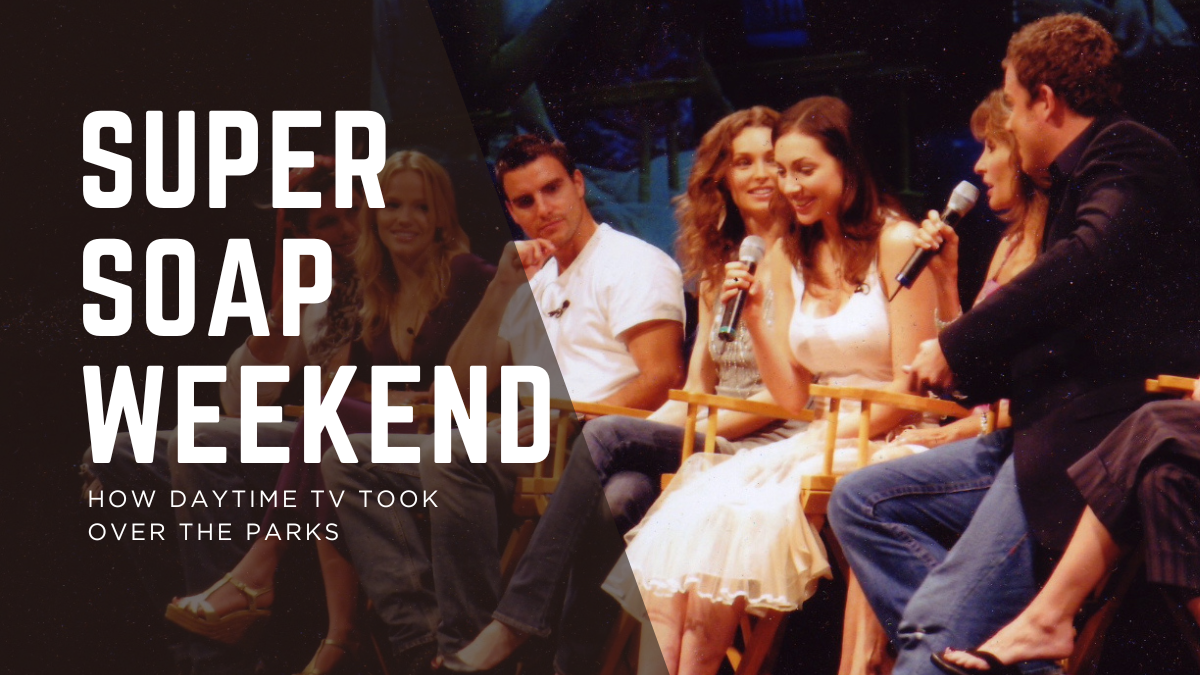
A long time ago in a galaxy that … Well, to be honest, wasn’t all that far away. This was down in Florida after all. But if you traveled to the WDW Resort, you could then experience “Star Wars Weekends.” Which ran seasonally at Disney’s Hollywood Studios Disney World from 1997 to 2015.
Mind you, what most folks don’t remember is the annual event that effectively plowed the road for “Star Wars Weekends.” Which was “Super Soap Weekend.” That seasonal offering — which allowed ABC soap fans to get up-close with their favorite performers from “All My Children,” “General Hospital,” “One Life to Live” and “Port Charles” — debuted at that same theme park the year previous (1996).
So how did this weekend-long celebration of daytime drama (which drew tens of thousands of people to Orlando every Fall for 15 years straight) come to be?
Michael Eisner’s Daytime TV Origins and a Theme Park Vision
Super Soap Weekend was the brainchild of then-Disney CEO Michael Eisner. His career in media began with short stints at NBC and CBS, but it truly took off in 1964 when he joined ABC as the assistant to Leonard Goldberg, who was the network’s national programming director at the time.
Eisner quickly advanced through the ranks. By 1971, he had become Vice President of Daytime Programming at ABC. That meant he was on the scene when One Life to Live joined the lineup in July 1968 and when All My Children made its debut in January 1970. Even after being promoted to Senior Vice President of Prime Time Programming in 1976, Eisner stayed close to the daytime division and often recruited standout soap talent for ABC’s primetime shows.
Fast forward nearly two decades to July 31, 1995. The Walt Disney Company announced that it would acquire ABC/Cap Cities in a $19 billion deal. Although the acquisition wasn’t finalized until February 1996, Eisner was already thinking ahead. He wanted to use the stars of All My Children, One Life to Live, and General Hospital to draw people to Disney’s theme parks.
He had seen how individual soap stars were drawing huge mall crowds across America since the late 1970s. Now he wanted to bring dozens of them together for something much bigger.
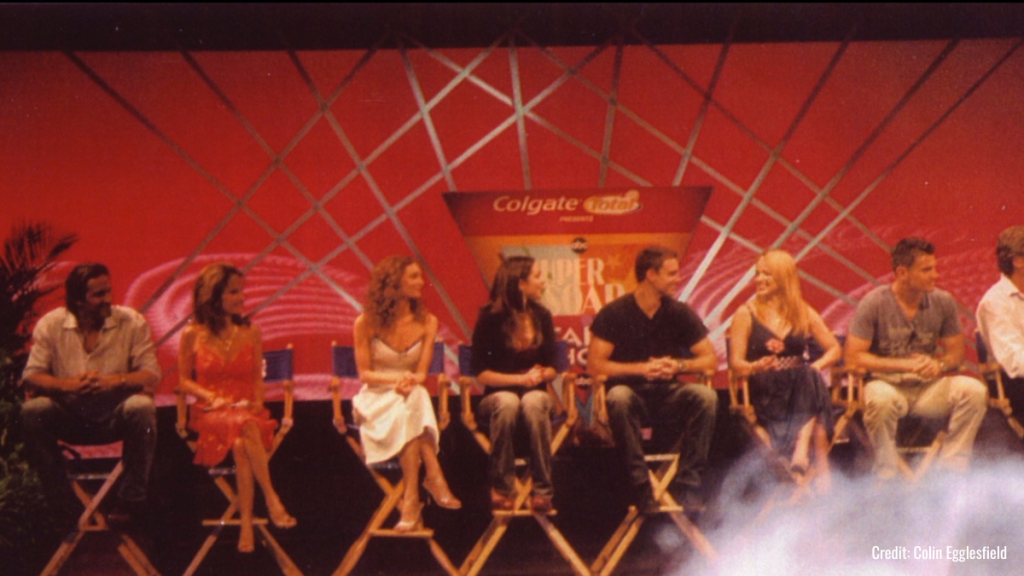
Super Soap Weekend Takes Over Disney-MGM Studios
The very first Super Soap Weekend was announced in June 1996, just a few months after the ABC deal closed. The event was scheduled for October 19 and 20 at Disney-MGM Studios and was a massive success.
The weekend featured panel discussions, autograph sessions, and photo opportunities with the stars of ABC’s daytime dramas. Thousands of fans packed the park for the chance to meet their favorite actors. Due to the overwhelming response, the event became an annual tradition and was eventually moved to Veterans Day weekend each November to better accommodate attendees.
Longtime fans like Nancy Stadler, her mom Mary, and their close friend Angela Ragno returned year after year, making the event a personal tradition and building lifelong memories.
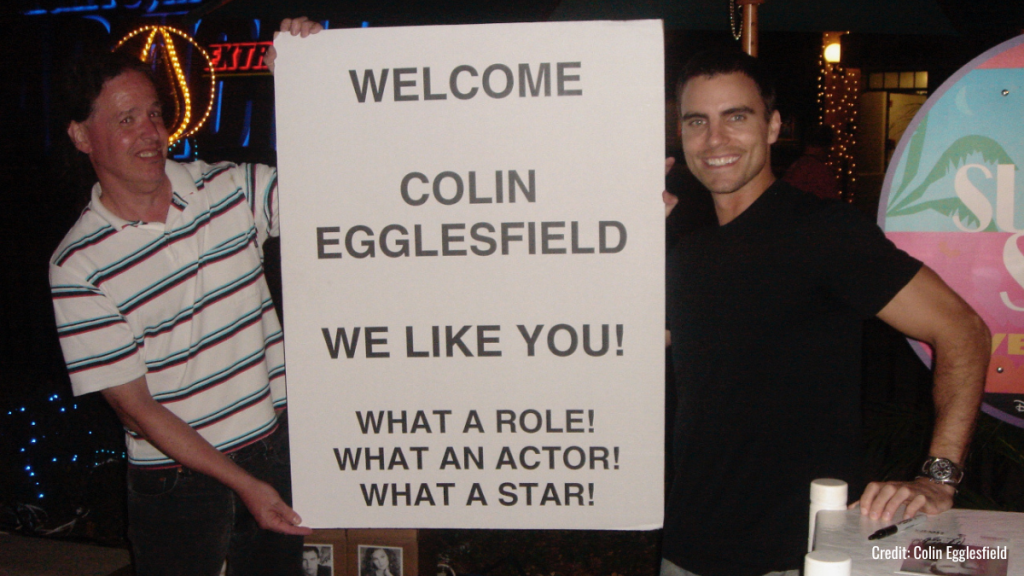
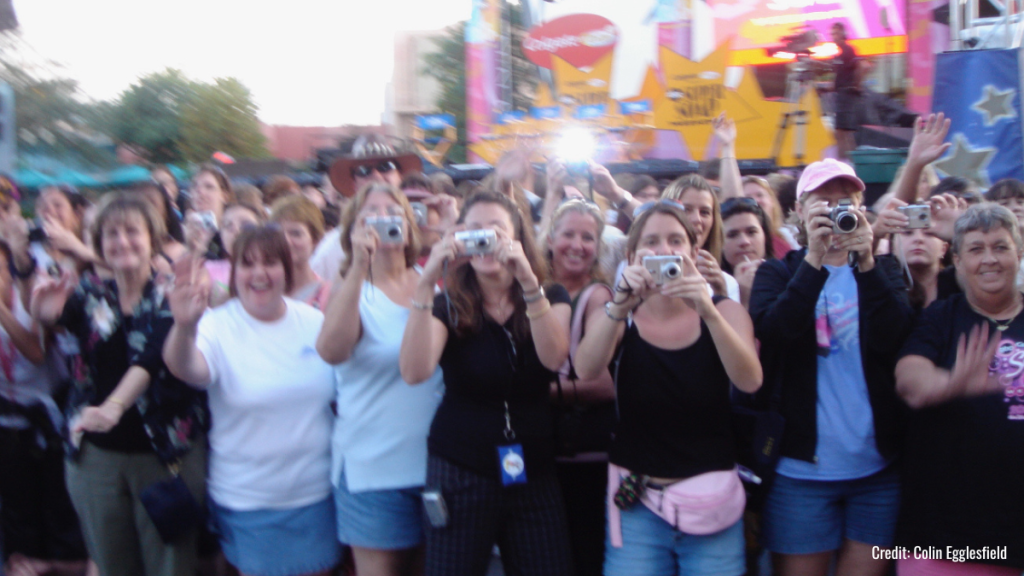
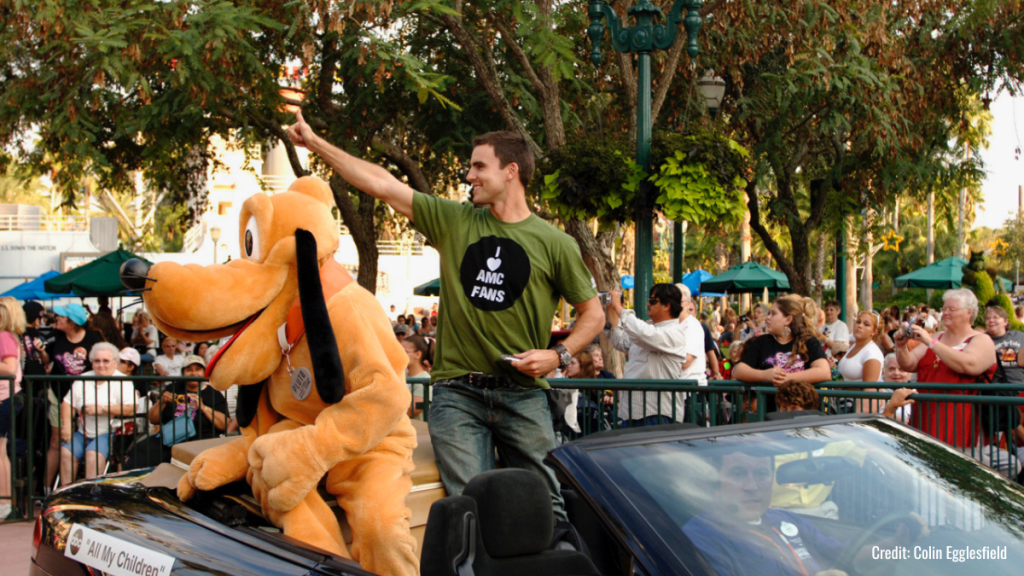
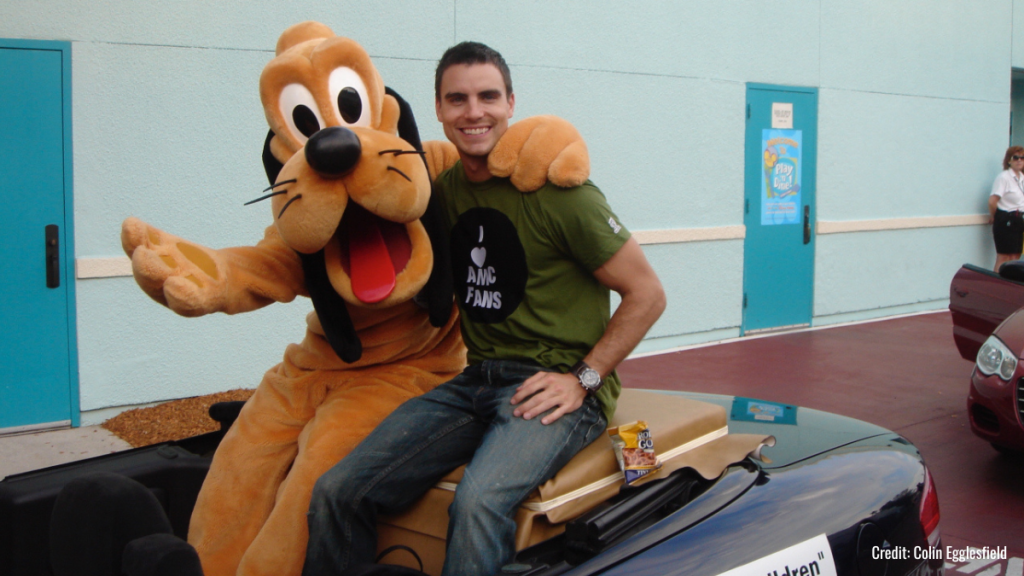
West Coast Events and the ABC Soap Opera Bistro
Disney even tried to recreate the event out west. Two Super Soap Weekends were held at Disneyland Resort, one in April 2002 and another in June 2003.
At Disney’s California Adventure, Eisner also introduced the ABC Soap Opera Bistro, a themed dining experience that opened in February 2001. Guests could dine inside recreated sets from shows like General Hospital and All My Children, including Kelly’s Diner and the Chandler Mansion. The Bistro closed in November 2002, but for fans, it offered a rare opportunity to step into the world of their favorite soaps.
SOAPnet, Port Charles, and the Expansion of Daytime TV at Disney
Eisner’s enthusiasm for soaps extended beyond the parks. In January 2000, he launched SOAPnet, a cable channel dedicated to prime time replays of ABC’s daytime dramas.
During his time at Disney, General Hospital also received a spin-off series titled Port Charles, which aired from June 1997 to October 2003. The show leaned into supernatural plotlines and was another example of Eisner’s commitment to evolving and expanding the soap genre.
The Final Curtain for Super Soap Weekend
In September 2005, Eisner stepped down after 21 years as head of The Walt Disney Company. Bob Iger, who had previously served as President of ABC and Chief Operating Officer of ABC/Cap Cities, took over as CEO. While Iger had deep ABC credentials, he didn’t share Eisner’s passion for daytime television.
In the fall of 2008, Disney hosted the final Super Soap Weekend at what was then still called Disney-MGM Studios. That same year, the park was rebranded as Disney’s Hollywood Studios, and Disney began shifting away from television-focused experiences.
Within the next five years, the rest of Eisner’s soap legacy faded. One Life to Live was canceled in January 2012. SOAPnet was rebranded as Disney Junior in February 2013. Later that year, All My Children ended its 41-year run on ABC.
Only General Hospital remains on the network today, the last standing soap from the golden age of ABC Daytime.
A New Chapter for Daytime TV and Super Soap Fans
The soap genre may have faded from its former glory, but it’s not gone. On February 24, 2025, CBS premiered a brand-new daytime drama called Beyond the Gates, marking the first new soap launch in years.
Meanwhile, All My Children alum Kelly Ripa has been actively working on a revival. In September 2024, she mentioned a holiday-themed movie set in Pine Valley that would bring back many original cast members. The project was in development for Lifetime, though its current status is unclear.
And what about Super Soap? Fans like Nancy and Angela still hope Disney will bring it back. Even if it only featured the cast of General Hospital, it would be a welcome return for longtime viewers who miss that one weekend a year where the magic of Disney collided with the drama of daytime TV.
If you want to hear firsthand what it was like to be part of Super Soap Weekend, be sure to listen to our I Want That Too podcast interview with actor Colin Egglesfield. He shares behind-the-scenes memories from his days as Josh Madden on All My Children and what it meant to be part of one of the most unique fan events in Disney park history.
History
The Super Bowl & Disney: The Untold Story Behind ‘I’m Going to Disneyland!’

One of the highlights of the Super Bowl isn’t just the game itself—it’s the moment when the winning quarterback turns to the camera and exclaims, “I’m going to Disney World!” This now-iconic phrase has been a staple of post-game celebrations for decades. But where did this tradition begin? Surprisingly, it didn’t originate in a stadium but at a dinner table in 1987, in a conversation involving Michael Eisner, George Lucas, and aviation pioneers Dick Rutan and Jeana Yeager.
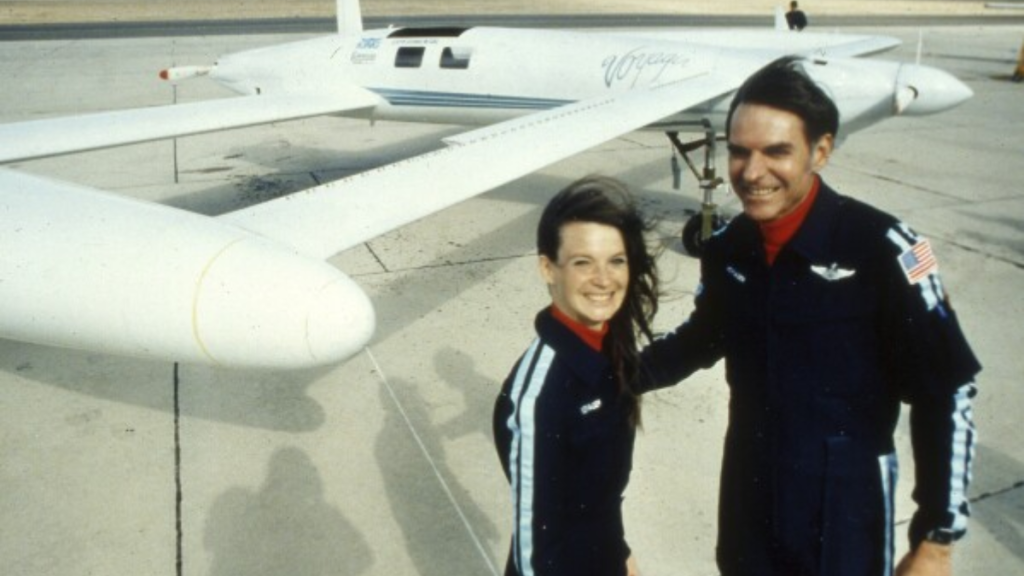
The Unlikely Beginning of a Marketing Sensation
To understand the origins of this campaign, we have to go back to December 1986, when the Rutan Voyager became the first aircraft to fly around the world without stopping or refueling. Pilots Dick Rutan and Jeana Yeager completed the nine-day journey on December 23, 1986, flying over 26,000 miles before landing at Edwards Air Force Base. Their historic achievement earned them national recognition, and just days later, President Ronald Reagan awarded them the Presidential Citizen Medal at the White House.
Meanwhile, Disney was gearing up for the grand opening of Star Tours at Disneyland, set for January 12, 1987. Following its usual playbook of associating major theme park attractions with real-world pioneers, Disney’s PR team invited astronauts Gordon Cooper and Deke Slayton to the launch event. But in a twist, they also invited Rutan and Yeager, who were still making headlines.
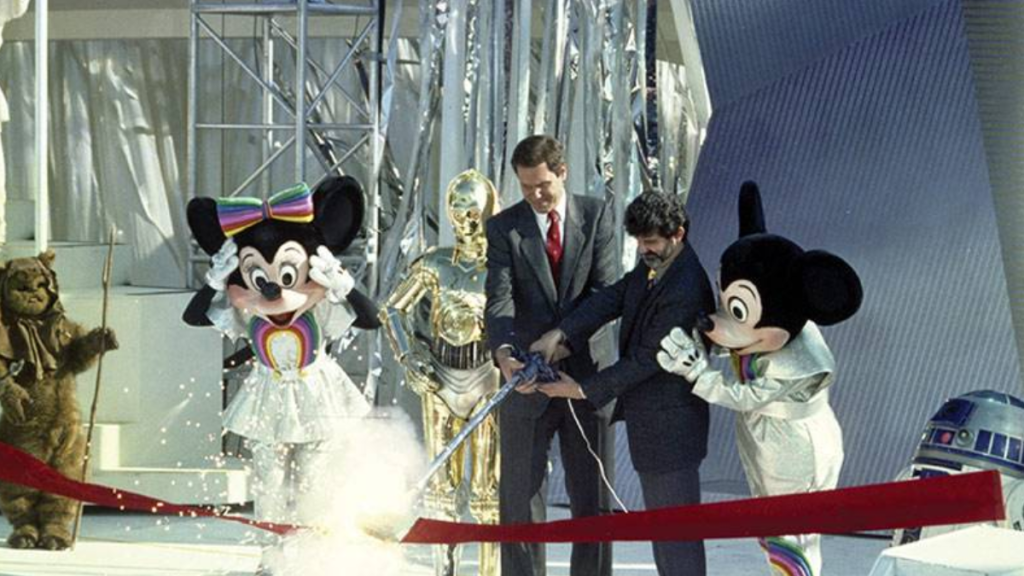
A Dinner Conversation That Changed Advertising Forever
After the Star Tours opening ceremony, a private dinner was held with Disney CEO Michael Eisner, George Lucas, and Eisner’s wife, Jane. During the meal, Eisner asked Rutan and Yeager, “You just made history. You traveled non-stop around the planet on a plane without ever refueling. How are you ever going to top that, career-wise? What are you two gonna do next?”
Without hesitation, Jeana Yeager replied, “Well, after being cramped inside that tiny plane for nine days, I’m just glad to be anywhere else. And even though you folks were nice enough to fly us here, invite us to your party… Well, as soon as we finish eating, I’m gonna go over to the Park and ride some rides. I’m going to Disneyland.”
Jane Eisner immediately recognized the power of Yeager’s statement. On the car ride home, she turned to Michael and said, “That’s a great slogan. I think you should use that to promote the theme parks.” Like many husbands, Michael initially dismissed the idea, but Jane persisted. Eventually, Eisner relented and pitched it to his team.
The Super Bowl Connection
With Super Bowl XXI just around the corner, Disney’s PR team saw an opportunity. The game was set for January 25, 1987, at the Rose Bowl in Pasadena—just miles from Disney Studios. What if they convinced the winning quarterback to say, “I’m going to Disneyland” live on-air?
Disney quickly struck a deal with both quarterbacks—Phil Simms of the New York Giants and John Elway of the Denver Broncos—offering each $75,000 to deliver the line if their team won. Simms led the Giants to victory, making history as the first athlete to say, “I’m going to Disney World!” on national television.
A Marketing Triumph
That year’s Super Bowl had the second-highest viewership in television history, with 87 million people watching Simms say the famous line. The next day, Disney turned the clip into a national commercial, cementing the phrase as a marketing goldmine.
Since then, “I’m going to Disneyland” (or Disney World, depending on the commercial) has been a staple of championship celebrations, spanning the NFL, NBA, and even the Olympics. What started as a casual remark at dinner became one of the most successful advertising campaigns in history.
A Lasting Legacy
Jane Eisner’s keen instinct and Disney’s ability to act quickly on a great idea created a tradition that continues to captivate audiences. The “I’m going to Disneyland” campaign remains a testament to the power of spontaneous inspiration and smart marketing, proving that sometimes, the best ideas come from the most unexpected places.
To learn more about Disney’s ties to the world of sports, check out I Want That Too: A Disney History and Consumer Product Podcast.
Television & Shows
How the Creators of South Park Tricked A-List Celebrities to Roast Universal – “Your Studio & You”
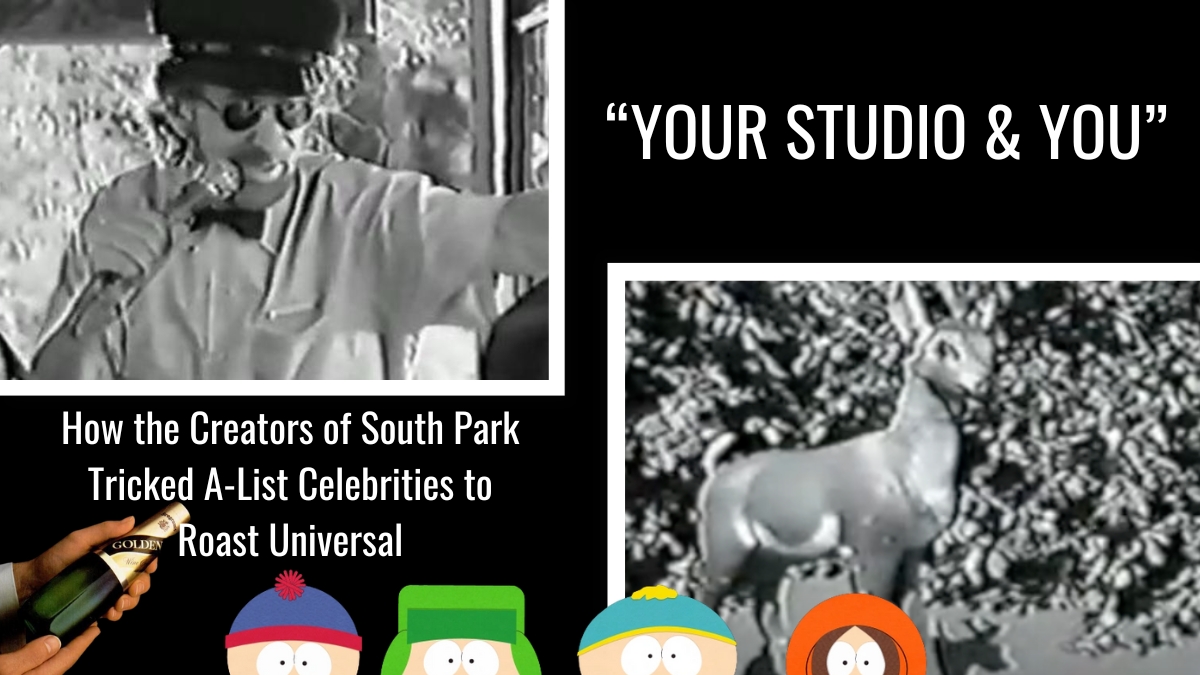
Universal Studios has a rich and storied history, but few moments are as peculiar—and as hilariously cutting—as the creation of Your Studio & You. This 14-minute parody film, commissioned in 1995 to celebrate Universal’s new ownership under Seagram’s, brings together an all-star cast, biting humor, and the unmistakable comedic fingerprints of Matt Stone and Trey Parker.
Long before South Park debuted on Comedy Central in 1997, Stone and Parker were already carving out a reputation for their irreverent style, and Your Studio & You perfectly encapsulates their knack for turning even the most corporate project into something delightfully subversive.
Matt Stone & Trey Parker Before South Park
Stone & Parker were already known out in Hollywood as funny guys. Thanks largely to “The Spirit of Christmas,” which was this video greeting card that they’d crafted for a Fox executive – who then distributed this infamously funny thing (which had Our Lord Jesus Christ & Santa Claus literally duking it out for the holiday affections of Cartman, Kenny, Stan & Kyle) to friends & family.
This was the early 1990s. No internet. Each copy of “The Spirit of Christmas” was made on VHS tape and then mailed. Went viral the old-fashioned way. It’s rumored that George Clooney made over 300 copies of “The Spirit of Christmas” and passed these VHS taps along to friends and family.
Things didn’t move as fast as they do today. “The Spirit of Christmas” still became a sensation out West.
Zucker Brothers
Matt & Trey also had other supporters in the entertainment industry. Among them David Zucker, who was one of the members of ZAZ (i.e., Zucker Abrahams Zucker), the talented trio that made “Airplane!” in 1980, “Top Secret!” in 1984 and the three “Naked Gun” movies.
- The original “Naked Gun” in 1988
- “Naked Gun 2 & 1/2 : The Smell of Fear” in 1991
- and “Naked Gun 33 & a 1/3: The Final Insult” in 1994
All five of these parody films had been made for Paramount Pictures. But in the Late Winter / Early Spring of 1995, Universal had persuaded the Zucker Brothers to come over and set up shop in a bungalow on their lower lot. With the hope that – at some point further on down the line – David & his brother Jerry would start making funny films for Universal.
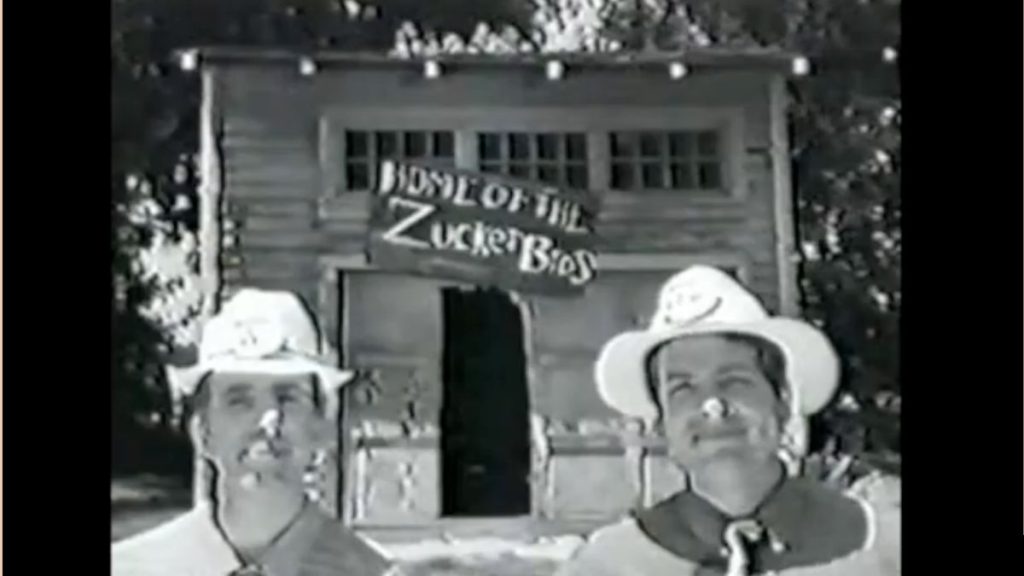
And it’s during this same window of time (We’re now talking April of 1995) that news breaks that Seagrams (Yep, the adult beverage company. Who – at the time – was making an absolute fortune on the sales of wine coolers) was about to buy a majority stake in MCAUniversal. We’re talking control of 80% of that company’s stock. Which would effectively make Seagrams the new owners of Universal Studios.
Edgar Bronfman
And Edgar Bronfman – the owner of Seagrams – knew that Universal had had a tough time with its previous owners – which had been the Matsushita Electric Industrial Co. of Japan. Matsushita had bought MCA back in November of 1990 for $7.5 billion but had never really understood the entertainment industry.
This is why – after repeatedly butting heads with Lew Wasserman & Sidney Sheinberg (i.e., the heads of Universal Studios & the Universal theme park respectively) when it came to creative control of this company – Matsushita decided to wash it hands of the entire enterprise. Agreeing to sell their holdings in MCA to Seagrams for $5.7 billion (effectively taking a nearly $2 billion loss on this investment).
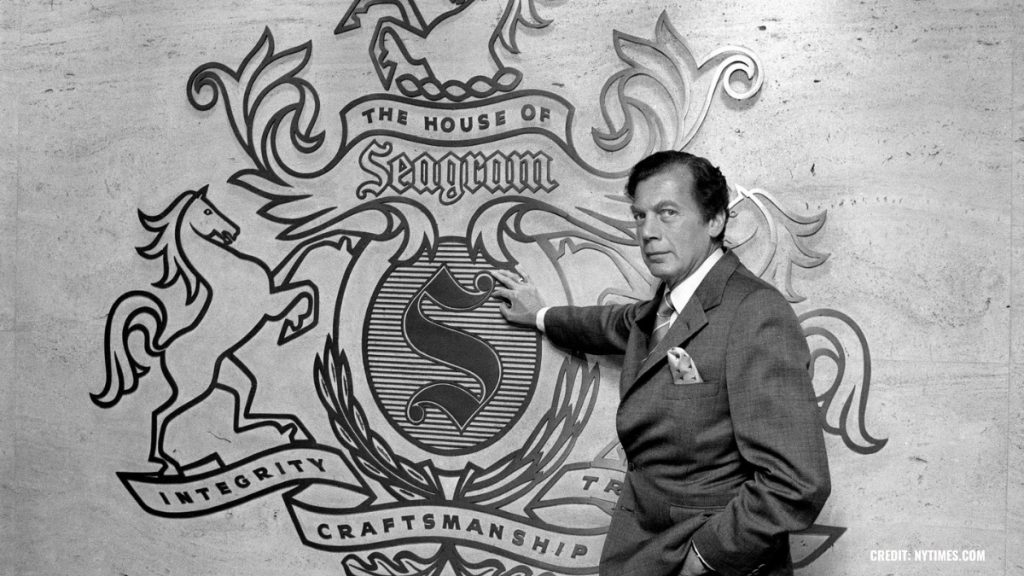
And Bronfman … He knew that some bad feeling had developed between Hollywood’s creative community and the Japanese owners of Universal. The thinking was that executives at Matsushita Electric had just not gotten what it took to make movies & TV shows.
And Edgar? Right from the get-go, he wanted to show that Seagrams was NOT going to be Matsushita Electric Redux. Bronfman was looking for a way to send a clear message to Hollywood’s creative community that Universal’s new owners got it. That they were willing to work with Hollywood to make the best possible movies & TV shows at Universal.
And how did Edgar decide to get this message across? By making a funny movie.
Zucker Commissions Trey Parker for “Your Studio & You”
Mind you, Bronfman himself didn’t make this film. The owner of Seagrams reached out to David Zucker. Who – after initially agreeing to produce this introduction-to-Universal film – then farmed out the production of the actual project to Trey Parker. Who – just two days before shooting was supposed to star on the Universal Lot – persuaded Matt Stone to come help him on this project.
Which brings us to “Your Studio and You.” Which is a parody of an educational film from the 1950s, right down to being shot in black & white and featuring a very generic soundtrack.
Now what’s amazing about watching “Your Studio and You” today is that this 14-minute-long film features some of the biggest names working in Hollywood back in the mid-1990s. We’re talking about people like recent Golden Globe winner Demi Moore, Sylvester Stallone, Michael J. Fox and Angela Lansbury. Not to mention two of the most powerful men in all of Hollywood, Steven Spielberg & Jeffrey Katzenberg.
And what’s especially interesting about watch “Your Studio and You” is that – as you watch these performers go through their paces in this motion pictures (which – most of the time – involves doing some innocuous task while holding a Seagram’s wine cooler) – you often get the feeling that this star is not in on the gag.
So how did Matt & Trey get away with this? Simple. There was never actually a script for “Your Studio and You.”
Filming “Your Studio & You” at Universal Studios Hollywood
Mind you, David Zucker would always insist that there was. Especially when he’d phone up celebrities on the Universal Lot and say “Hey, I’m sending over a couple of college kids later today. They’re working with me on a new parody film. It’s something that we’re doing for the new owners of Universal. I need just a half hour of your time. We’re shooting something special for the party we’ll be holding when the Seagrams people first arrive at the Studio. Absolutely. You’ll definitely get an invite to that party. So can I count on you to help these kids out? Beautiful. They’ll be over there later this morning.”
And then Matt & Trey would show up and say “… Dang, Miss Lansbury. We’re sorry. We must have left our copy of the ‘Your Studio and You’ script back in our office. Which is clear on the other side of the Lot. So – rather than waste your time – why don’t we do this instead? Follow us over to the Psycho House. Where we’re then going to get footage of you painting the front porch on Mother Bates’ house while you say ‘Gosh, with all of the wonderful improvements going on around here, everyone is going to want to work at Universal.’ Oh, and can we also get you to wear this button on the front of your blazer which reads ‘Universal is A-OK’ ? “

And over & over again, the biggest names who were working for Universal at that time took part in the production of “Your Studio & You” because A) David Zucker vouched for Matt Stone & Trey Parker and B) this was something that was being made for the new owners of Universal. And it’s just natural to want to get in good with the new boss.
Steven Spielberg, Jeffery Katzenberg, and Jaws
But no one at Universal anticipated that “Your Studio & You” would wind up being as sharp edged as the finished product turned out to be. I mean, it’s one thing to bite the hand that feeds you. But “Your Studio & You” ? It doesn’t just bite the hand. It takes the hand off at the wrist.
It’s a brutally funny film. With one of the meanest moments reserved for Steven Spielberg, who plays a driver on the Universal Studio Tour who’s trying to persuade a tram full of bored tourists (one of whom is played by Jeffery Katzenberg) that the “Shark Attack” scene down by Jaws Lagoon is actually exciting.
Spielberg actually says lines like “ … Whoa, whoa. What is going on here? Ladies and gentlemen, this never happens. Look out! It’s a shark! Whoa, that is one big scary shark.”
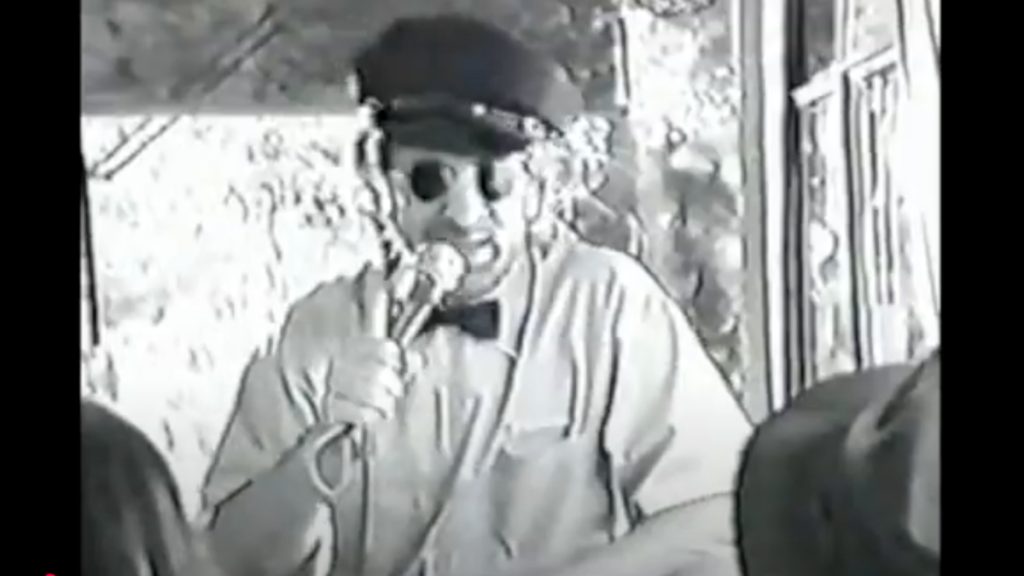
Mind you, as footage of this mechanical shark repeatedly coming up out of the water is shown, “Your Studio & You” ‘s off-screen narrator (who is voiced by Trey Parker says):
“But what about tomorrow? If we don’t keep in step with the times, things that were once neat and thrilling can become old and stupid.”
“Your Studio & You” Reception
This film was supposed to be shown only once at the welcoming party for Seagrams executive on the Universal Lot. And I’m told that – when Edgar Bronfman saw the finished product at that party – he reportedly turned to David Zucker and said “ … That’s a little more mean-spirited that I think it needed to be.”
And with that, “Your Studio & You” was supposed to go back into the Universal vault, never to be seen again. But when “South Park” debuted on Comedy Central in August of 1997 and then became a sensation for its biting humor, there was suddenly a lot of interest in what else Matt & Trey had done. Which is why copies of “The Spirit of Christmas” began to circulate. And – over time – copies of “Your Studio & You” began to bubble up.
Which – as Stone & Parker have repeatedly pointed out – was just not supposed to happen. Largely because none of the celebrities who appeared in “Your Studio & You” had never signed releases for Universal’s legal department. Because – again – this was for a movie that was only going to be shown once at a private function on the Universal Lot.
Matt mentioned (as part of a career retrospective at the Paley Center in LA back in 2000) that “ … they wouldn’t even let us keep a copy of the finished film.”
It’s a funny but brutal movie. And worth taking a look at today especially if you’re a theme park history buff because it shows Universal Studios Hollywood’s “Jurassic Park: The Ride” still under construction on the Lower Lot. That attraction would finally open to the public in June of 1996.
“Your Studio & You” became a lot easier to see after Seagrams sold off its share of Universal to Vivendi in 2000. Copies began propagating online after that. Though Universal Legal will periodically make an effort to get the latest copy of “Your Studio & You” taken off the Internet because – again – none of the performers who appear on camera ever signed the proper releases and/or were paid for their efforts.
That said, if you’re up for a mean-spirited laugh, “Your Studio & You” is well worth 14 minutes of your time. That said, once you watch this thing, be warned:
- You’re immediately going to be thirsty for a Seagram’s wine cooler
- And you’re going to have a sudden desire to go out & buy a porcelain deer.
-
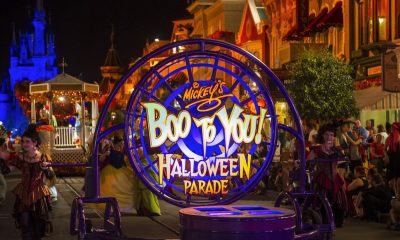
 Theme Parks & Themed Entertainment8 months ago
Theme Parks & Themed Entertainment8 months agoThe Story of Mickey’s Not-So-Scary Halloween Party: From One Night to a Halloween Family Tradition
-
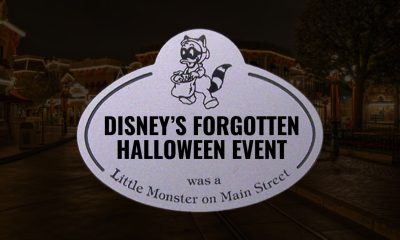
 Theme Parks & Themed Entertainment7 months ago
Theme Parks & Themed Entertainment7 months agoDisney’s Forgotten Halloween Event: The Original Little Monsters on Main Street
-
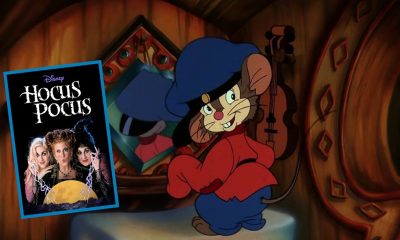
 Film & Movies7 months ago
Film & Movies7 months agoHow “An American Tail” Led to Disney’s “Hocus Pocus”
-
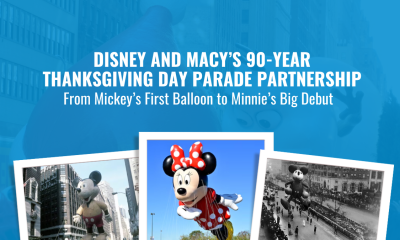
 Theme Parks & Themed Entertainment5 months ago
Theme Parks & Themed Entertainment5 months agoDisney and Macy’s 90-Year Thanksgiving Day Parade Partnership: From Mickey’s First Balloon to Minnie’s Big Debut
-
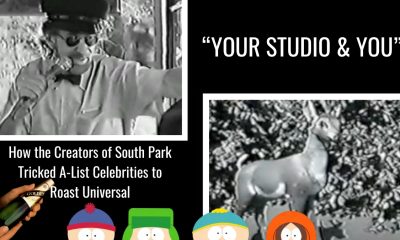
 Television & Shows3 months ago
Television & Shows3 months agoHow the Creators of South Park Tricked A-List Celebrities to Roast Universal – “Your Studio & You”
-

 History3 months ago
History3 months agoThe Super Bowl & Disney: The Untold Story Behind ‘I’m Going to Disneyland!’
-

 Podcast3 weeks ago
Podcast3 weeks agoEpic Universal Podcast – Aztec Dancers, Mariachis, Tequila, and Ceremonial Sacrifices?! (Ep. 45)
-
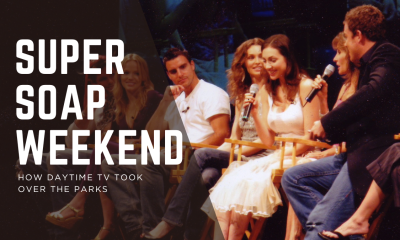
 Television & Shows2 days ago
Television & Shows2 days agoThe Untold Story of Super Soap Weekend at Disney-MGM Studios: How Daytime TV Took Over the Parks






